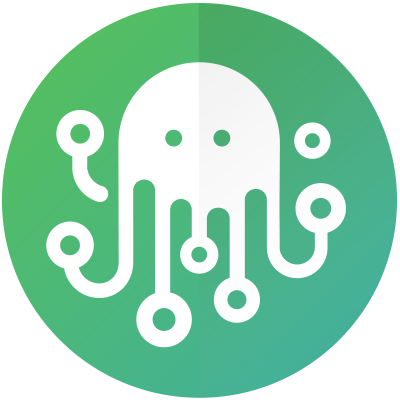SAP Solution Manager
Supported Versions
Please note that using a supported version is mandatory.
Product | Supported Deployment Types | Supported Versions |
|---|---|---|
SAP Solution Manager | All | 7.2 (including SP14) |
Environmental Prerequisites
Confirm the prerequisites of the corresponding integration template before continuing further, as some templates may not require all environmental prerequisites.
How to import the IH Integration Package for SAP Solution Manager?
This is an advanced SAP configuration, and it's strongly advised to be executed by an SAP administrator!
Unzip the
ZigiOps_Integration_package_for_SAP_Solman_v4.zipto your SAP Solution Manager system.Navigate to the trans directory on the development server.
Copy the K Type Transport to the cofile directory and the R Type Transport to the data directory, both located in the trans directory.
Enter STMS (SAP Transport Management System) as the transaction code on the SAP Solution Manager system.
Click the Import button to proceed to the import queue and double-click the appropriate development system.
Click the Extras > Other Requests > Add button.
In the Add Transport Request to Import Queue dialog box, do the following:
Enter your target client number (for example, 100).
Select the Transp. Request field.
Search for your SAP transports using a wildcard search—enter * followed by the digit code of the transport files.
Select the transport number and click the checkmark to continue.
Add the integration as a third-party component as follows:
Enter "SOLMAN_SETUP" as the transaction code, and then click the SAP Solution Manager: Configuration tab.
On the left panel, select the desired monitoring configurations, for example, "Job Monitoring", "System Monitoring", "User Experience Monitoring", etc.
Go to Step 2 (Configure Infrastructure) and select Step 2.3 (Default Settings) when it expands.
Click the Edit button, and from the "Third-Party Components" tab, set the "Third-Party Components" option to "Active".
Click the Add button, select Implementation: BAdI Definition for Alert Reactions and click the OK button to continue.
Click the Read Only button on the top of the page and save your changes.
How to configure the IH Integration Package for SAP Solution Manager?
The sections below explain how to configure the integration package.
Configure RFC-Connection to Integration Hub server
Find or create the RFC-Connection "ZGW_NEW_ALERT":
Open the SAP GUI and search for "SM59".
Expand the "HTTP Connections to External Server" object.
Find "ZGW_NEW_ALERT", double-click to open it, or create a new RFC-Connection by clicking the New button.
Configure the "Target URL" (host. port, path, and proxy):
Open the "ZGW_NEW_ALERT" object.
Click on the Display Change button to edit the configuration.
Under the "Technical Settings" tab, there are configuration options for "Target System Settings" and "HTTP Proxy Options" with the below properties:
Target Host - the Integration Hub server's FQDN, hostname, or IP.
Service No. - the Integration Hub listener's port number ("9292" by default) to which the requests will be sent.
Path Prefix - the Integration Hub listener's context path (this is "/listener/sap-solman/alerts" by default) to which the request will be sent (it must start with “/”).
Proxy Host - the FQDN, hostname, or IP of the proxy server (optional).
Proxy Service - the port number of the proxy server (optional).
Proxy User - the username for the proxy (optional).
Proxy Password - the password for the proxy (optional).
Define the logical connection between the RFC-Connection to the Integration Hub server, and SAP Solution Manager alerts the integration will process
Find the custom "ZGW_CONNECTIONS" mapping table:
Open the SAP GUI, search for the "ZGW_CONNECTIONS" configuration, and execute it, which will open the default configuration table.
The "ZGW_CONNECTIONS" configuration table provides the logical connections between particular RFC-Destination and alert types based on their "Context ID" and "Alert Type ID" attributes. Each combination of these two values can be defined as a separate RFC-Connection to the Integration Hub server. You may also define which SAP Solution Manager alert types will be part of the synchronization flow. The maintenance view "ZGW_CONNECTIONSV" and the transaction "ZGW_CONNECTIONS" have been created to edit the table entries. The table fields are connected with the search helps to make table maintenance more convenient.
Creating a new record in the "ZGW_CONNECTIONS" table:
Open the "ZGW_CONNECTIONS" table for editing by clicking the Change Display button.
Click the New Entries button:
Search for a particular "Context ID" or type asterisk wildcard “*” to match all entries.
Search for a particular "Alert Type ID" or type asterisk wildcard “*” to match all entries.
Search for RFC Destination by finding the "ZGW_NEW_ALERT" RFC-Connection to the Integration Hub server
Click the Save button to save the changes.
Deleting a record from the "ZGW_CONNECTIONS" table:
Open the "ZGW_CONNECTIONS" table for editing by clicking the Change Display button.
Select the desired record and click the Delete button.
Click the Save button to save the changes.
Handling multiple records in the "ZGW_CONNECTIONS" table (there are four priority levels):
Priority selection with both parameters.
Priority selection with "Context ID" and wildcard in place of "Alert Type ID".
Priority selection with a wildcard "*" in place of "Context ID" and "Alert Type ID".
Priority selection with two wildcards (in case previous priorities didn’t end with success).
Connected System Configuration
Follow the steps below to add your instance as a connected system.
Log into your ZigiOps instance.
Go to Connected Systems → Add New System → SAP-SolMan and configure the below parameters:
URL → This is the URL of the SAP Solution Manager instance. For example,
https://sap.example.com.Username → This is the username that the Integration Hub will use to authenticate to the SAP Solution Manager instance.
Password → This is the password that the Integration Hub will use to authenticate to the SAP Solution Manager instance.
Client Number → This is the client number of the SAP Solution Manager instance.
Proxy Settings → This setting enables the usage of a proxy server.
Examine the settings and if they are correct, click the Save button to save the system.
